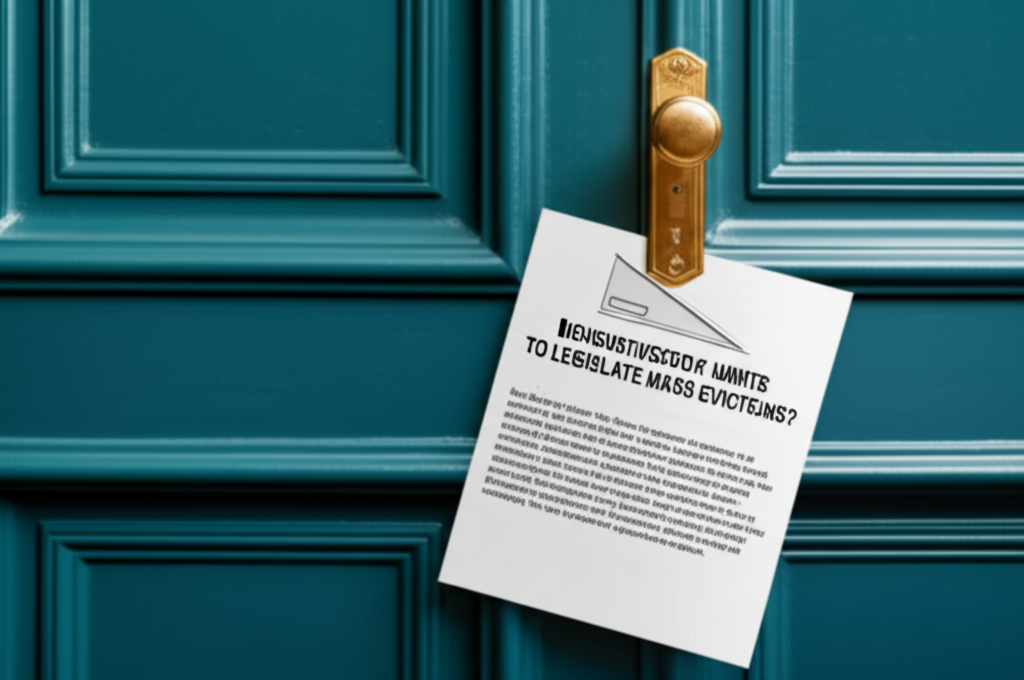Are We Going to Legislate Mass Evictions?
The question posed by the headline, “Are We Going to Legislate Mass Evictions?”, strikes at the heart of an escalating concern within the housing market and broader economy. While no government body is actively proposing legislation explicitly designed to cause a wave of widespread displacements, the underlying apprehension reflects a growing anxiety over economic pressures, the expiration of pandemic-era protections, and the legislative landscape that could inadvertently accelerate evictions. As young adults increasingly navigate a challenging financial environment marked by inflation and elevated interest rates, understanding the confluence of factors that could lead to such a scenario becomes paramount. The discussion is not about direct legislative intent, but rather about the potential for policy choices, or the lack thereof, to exacerbate an already fragile housing situation for millions.
The specter of mass evictions stems primarily from a complex interplay of economic headwinds and the winding down of extraordinary support measures implemented during the COVID-19 pandemic. For much of 2020 and 2021, federal and local eviction moratoriums, coupled with significant emergency rental assistance programs (ERAP), provided a crucial lifeline, preventing an estimated millions of evictions. However, as these moratoriums expired and rental assistance funds dwindled or were fully disbursed, the housing market reverted to pre-pandemic legal frameworks, often without adequate transition or new protective measures. This shift has left many vulnerable renters exposed to market forces they can no longer absorb. Inflation has driven up the cost of living across the board, from groceries to gasoline, while wage growth has struggled to keep pace, especially for lower and middle-income households. This economic squeeze directly impacts a renter’s ability to pay rent on time, leading to arrears and potential eviction filings. Landlords, too, face escalating costs, including property taxes, insurance, maintenance, and higher interest rates on mortgages for their rental properties, creating pressure to recoup expenses through rent increases or to pursue eviction for non-payment.
Legislatively, the approach to housing and evictions is fragmented, with significant variations at the state and local levels. While federal intervention on the scale seen during the pandemic is unlikely to recur, states and municipalities are grappling with how to balance tenant protections with landlord rights and the health of the rental market. Some jurisdictions have moved to implement “just cause” eviction laws, which require landlords to have a valid reason, such as non-payment of rent or lease violations, to evict a tenant, rather than simply allowing “no-fault” evictions. Others have extended notice periods for rent increases or lease non-renewals, or have established rental assistance programs funded by state or local budgets. Conversely, in other areas, legislative efforts might focus on streamlining the eviction process, or resisting measures seen as detrimental to property owners’ ability to manage their investments. The absence of comprehensive national housing policy, combined with a persistent shortage of affordable housing units across the country, further complicates matters. Experts frequently point to the fundamental supply-demand imbalance as a core driver of rising rents and housing insecurity. Without a significant increase in affordable housing stock, the competition for available units will continue to drive up prices, pushing more households to the brink of displacement.
In conclusion, the concern about legislating mass evictions is less about a direct policy mandate and more about the cumulative effect of economic strain, the absence of robust safety nets, and disparate legislative responses. The housing market is experiencing a precarious period where the removal of pandemic-era protections coincides with enduring economic challenges for a substantial portion of the population. While policymakers are not crafting laws to *cause* mass evictions, the legislative and regulatory frameworks currently in place, coupled with broader economic conditions, could indeed facilitate a surge in displacements if proactive and balanced solutions are not implemented. The dialogue among tenant advocates, landlord associations, and government officials continues to highlight the urgent need for strategies that address housing affordability, prevent homelessness, and ensure the stability of the rental market for both tenants and property owners. How these complex factors are navigated will ultimately determine the housing security landscape for millions of Americans in the coming years.





